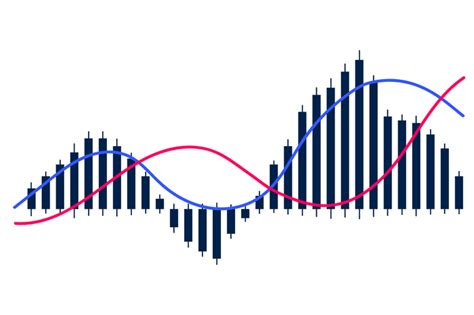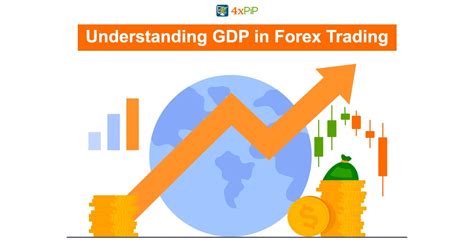Forex trading can be an exciting yet challenging endeavor for both newcomers and experienced traders alike. One of the most critical factors in achieving success in this market is understanding the best time to trade Forex. The timing of your trades can significantly impact your profits, as market conditions vary throughout the day and across different currency pairs. Whether you're trading popular pairs like EUR/USD or GBP/USD or exploring emerging markets, knowing when to enter or exit a position is essential to capitalize on the market's volatility and liquidity.
Understanding the Market Hours
The Forex market operates 24 hours a day, but not all hours are equal. The time of day you choose to trade plays a vital role in the opportunities and risks you'll encounter. Understanding Forex trading hours is fundamental to knowing when to place your trades for optimal market conditions.

The 24-Hour Forex Market
The Forex market runs 24 hours a day, five days a week, due to its global reach. Here are the key components that make this possible:
Global Participation: Forex is a decentralized market, which means it operates across multiple time zones worldwide.
Continuous Operations: The market opens on Sunday evening and closes on Friday evening (GMT).
Currency Pairs Trading: While the market never closes, some currency pairs experience more liquidity during specific hours.
Key Market Hours: The market is divided into three major trading sessions: the London, New York, and Tokyo sessions, each having unique trading characteristics.
The Major Forex Trading Sessions (London, New York, Tokyo, Sydney)
Each trading session is unique, and they all play a significant role in the volatility and liquidity of currency pairs.
London Session:
Active from 8 AM to 4 PM GMT
The most liquid and volatile session, especially for pairs like EUR/USD and GBP/USD.
London is home to the highest concentration of Forex trading volume.
New York Session:
Active from 1 PM to 10 PM GMT
Significant overlap with the London session, leading to even more trading opportunities.
Highly active in USD-related pairs such as USD/JPY and USD/CHF.
Tokyo Session:
Active from 11 PM to 8 AM GMT
The quietest of the major sessions, with pairs like AUD/USD and NZD/USD seeing more activity.
Sydney Session:
Active from 10 PM to 7 AM GMT
Begins the Forex trading cycle for the week, with lower liquidity than the others.
How Market Overlaps Impact Liquidity and Volatility
During market overlaps, liquidity and volatility tend to rise, offering more trading opportunities:
London/New York Overlap (1 PM to 4 PM GMT):
The most volatile period of the day, particularly for the EUR/USD and GBP/USD pairs.
High volume leads to tighter spreads and faster price movements.
Tokyo/London Overlap (7 AM to 8 AM GMT):
Moderate overlap with increased activity in Asian and European currency pairs like EUR/JPY and USD/JPY.
Why It Matters:
Market overlaps create optimal conditions for scalping and day trading strategies.
Best Times for High-Volatility Pairs (e.g., EUR/USD, GBP/USD)
Certain currency pairs are more volatile during specific sessions. Traders can capitalize on high-volatility conditions, especially when the following overlap:
EUR/USD:
Best Time: 1 PM to 4 PM GMT (New York/London overlap)
Characteristics: Fast-paced price movements due to high liquidity.
GBP/USD:
Best Time: 8 AM to 4 PM GMT (London Session)
Characteristics: Known for wide price swings, providing excellent opportunities for trend following strategies.
USD/JPY:
Best Time: 1 PM to 10 PM GMT (New York Session)
Characteristics: Particularly volatile during U.S. economic reports.
Trading During Off-Peak Hours: Risks and Opportunities
Trading during off-peak hours presents both risks and rewards:
Risks:
Lower Liquidity: Fewer market participants can result in wider spreads and less favorable entry points.
Increased Slippage: Orders may not execute at the desired price due to reduced market depth.
Opportunities:
Lower Competition: With fewer traders in the market, you may face less competition for entry and exit points.
Steady Movements: In pairs like AUD/USD and NZD/USD, off-peak hours may offer steady price movements ideal for swing trading or position trading.
By understanding these various market hours and the impact they have on liquidity and volatility, traders can strategically plan when to trade based on their preferred currency pairs and risk appetite.
Trading Strategies and Timing
Effective timing is crucial for implementing successful trading strategies in the Forex market. Each trading strategy benefits from specific market conditions and timing.
Scalping and Timing: Finding the Right Moment for Small Moves
Scalping requires quick, precise decisions. It relies on short-term price fluctuations, and timing plays a critical role in maximizing profits while minimizing risks.
Best Time to Trade:
Scalpers thrive during periods of high liquidity, such as during the London and New York overlap (1 PM - 4 PM GMT).
EUR/USD and GBP/USD are ideal pairs due to their high volatility.
Optimal setups often occur when spreads are tight and price movements are frequent.
Challenges:
Requires deep focus and rapid execution.
Scalping works best with low-latency platforms like MetaTrader 5 or cTrader.
Risk management is crucial due to the frequent number of trades placed.
Day Trading: Identifying the Best Time to Enter and Exit
Day trading involves opening and closing positions within the same trading day. Timing plays a critical role in entering and exiting trades successfully.
Key Periods for Day Traders:
London/New York Overlap (1 PM - 4 PM GMT) is the most favorable due to its high volatility.
The New York Session (1 PM - 10 PM GMT) also offers substantial market movements, especially in USD-related pairs like USD/JPY and USD/CHF.
Top Tools:
RSI and MACD indicators help day traders identify overbought or oversold conditions, leading to better entry points.
Use of Stop-Loss Orders and Take-Profit Orders ensures that traders limit their risks.
Swing Trading and Timing Your Trades for Bigger Movements
Swing traders aim for larger price movements, holding positions from a few days to weeks. Timing in swing trading is about entering when trends are established, and exits are strategically placed.
Best Time to Enter Trades:
Swing traders focus on the London and New York Sessions when volatility is high, particularly for pairs like EUR/USD and GBP/USD.
Watching for Fibonacci retracements or Bollinger Bands breakouts helps identify potential entry points.
When to Exit:
Exiting during periods of price consolidation can minimize risk, ensuring you capture the larger market move without overexposing your position.
Position Trading: Timing in Long-Term Trends
Position trading is about identifying long-term trends and holding positions for weeks, months, or even years. Timing is less about immediate market movements and more about broader market analysis.
Long-Term Trend Analysis:
Position traders focus on broader market fundamentals like interest rates, GDP growth, and political events that influence currency pairs like USD/CAD or GBP/USD.
Timing is based on key economic indicators and news reports that provide long-term market directions.
Risk Management for Long-Term Positions:
Stop-Loss Orders are placed to protect against major downturns while still allowing the position to ride through fluctuations in the market.
Position sizing is crucial to minimize the risk of large losses.
The right timing for each strategy can make the difference between profit and loss. By recognizing the ideal market conditions for scalping, day trading, swing trading, and position trading, traders can optimize their performance, minimize risk, and align their strategies with the best market opportunities.
Using Technical Analysis to Time Your Trades
Mastering the use of technical indicators is key to identifying the optimal times to enter and exit trades. By analyzing chart patterns and utilizing well-known tools, traders can time their trades more effectively and align them with market trends.

How Moving Averages Indicate Entry/Exit Points
Moving averages are simple yet powerful tools used to smooth out price data and identify trends. They are particularly effective in determining entry and exit points.
Common Moving Averages Used:
Simple Moving Average (SMA): Offers a smooth line of average prices over a set period.
Exponential Moving Average (EMA): More responsive to recent price changes, ideal for spotting trend reversals quicker.
Entry Signals:
Golden Cross: Occurs when a short-term EMA crosses above a long-term SMA, signaling a potential buy.
Death Cross: Occurs when a short-term EMA crosses below a long-term SMA, signaling a potential sell.
Exit Signals:
Traders can exit when the price crosses back below or above a moving average, confirming a reversal in the trend.
RSI: Spotting Overbought/Oversold Conditions for Timing
The Relative Strength Index (RSI) is a momentum oscillator that measures the speed and change of price movements. It’s primarily used to identify overbought or oversold conditions in a market.
RSI Values:
An RSI above 70 indicates that the market is overbought, suggesting a potential selling opportunity.
An RSI below 30 signals that the market is oversold, potentially indicating a buying opportunity.
Best Practices for Timing:
Confirmation with Other Indicators: Combine RSI with tools like the Moving Average to confirm entry or exit points.
Divergence: When price reaches new highs while RSI shows lower highs, it could indicate a trend reversal is near.
MACD and Timing: Identifying Trend Reversals
The MACD (Moving Average Convergence Divergence) indicator is widely used to identify momentum, trend direction, and potential trend reversals.
MACD Components:
MACD Line: Difference between the short-term and long-term EMAs.
Signal Line: The 9-period EMA of the MACD line.
Histogram: The difference between the MACD line and the Signal Line.
Trend Reversal Signals:
Bullish Crossover: When the MACD line crosses above the Signal Line, it indicates potential upward momentum.
Bearish Crossover: When the MACD line crosses below the Signal Line, it suggests the start of a downward trend.
Divergence: If prices are moving in one direction but the MACD is moving in the opposite, a reversal may occur.
Bollinger Bands: Recognizing Market Extremes
Bollinger Bands consist of a middle band (the 20-period simple moving average) and two outer bands that represent standard deviations.
When Prices Approach the Bands:
Upper Band: If prices touch or breach the upper band, the market is potentially overbought and a reversal may occur.
Lower Band: If prices touch or breach the lower band, the market may be oversold and due for a bounce.
Trading Strategy:
Breakouts: Prices breaking the upper or lower band could signal a continuation of the trend.
Reversals: Prices returning to the middle band after touching the outer bands may indicate a market reversal.
Fibonacci Retracement: Finding Potential Reversal Zones
The Fibonacci Retracement tool is used to identify potential reversal levels based on key Fibonacci ratios.
Common Fibonacci Levels:
23.6%, 38.2%, 50%, 61.8%
How to Use:
Uptrend: Draw from the swing low to the swing high to find retracement levels that may act as support.
Downtrend: Draw from the swing high to the swing low to find retracement levels that may act as resistance.
Best Practice: Combine Fibonacci retracement with other indicators (e.g., RSI or MACD) to increase the accuracy of reversal predictions.
Using the Ichimoku Cloud for Timing Entry Points
The Ichimoku Cloud is a comprehensive indicator that provides insights into support, resistance, and trend direction.
Components of the Ichimoku Cloud:
Tenkan-sen: The conversion line, showing the midpoint of the last 9 periods.
Kijun-sen: The base line, showing the midpoint of the last 26 periods.
Senkou Span A & B: The cloud, which forecasts support and resistance levels.
Chikou Span: The lagging line, confirming past price action.
Timing Entries:
Buy Signal: When the price is above the cloud and Tenkan-sen crosses above Kijun-sen.
Sell Signal: When the price is below the cloud and Tenkan-sen crosses below Kijun-sen.
Confirmation: The Ichimoku Cloud is often used in combination with other tools to confirm trends and identify key entry points.
By using these powerful technical indicators, traders can effectively time their trades and increase their chances of success. Whether it’s through Moving Averages, RSI, or the Ichimoku Cloud, mastering these tools helps you make informed, data-driven decisions in the fast-paced world of Forex trading.
Fundamental Analysis and Timing
Fundamental analysis plays a crucial role in timing your Forex trades. By examining global economic factors like interest rates, GDP growth, inflation, and political events, traders can better align their strategies with long-term trends and market-moving events.
How Interest Rates Affect Currency Pairs
Interest rates set by central banks are a major driver of currency movements in the Forex market.
Central Bank Influence:
Higher Interest Rates attract foreign capital, strengthening the currency (e.g., EUR/USD or USD/JPY).
Lower Interest Rates can weaken a currency due to reduced capital inflow.
Timing Trade Entries/Exits:
Interest Rate Hike: Often leads to a buy opportunity for a currency, as investors seek higher returns.
Interest Rate Cut: Typically signals a sell opportunity, as lower rates make the currency less attractive.
Real-World Examples:
USD strengthens when the Federal Reserve raises rates, affecting pairs like USD/JPY or EUR/USD.
The Bank of England rate decisions impact GBP/USD and EUR/GBP.

GDP Growth and Timing Forex Trades
Gross Domestic Product (GDP) growth is a key indicator of a country's economic health. Strong growth often supports a currency, while weak growth can signal economic troubles.
Understanding GDP's Role in Forex:
Forex traders often use GDP reports to determine medium to long-term trends.
Look for trends in GDP growth to plan for Swing Trading or Position Trading.
A rising GDP suggests a strong economy, often leading to currency appreciation (e.g., USD when U.S. GDP grows).
A falling GDP or recession signals potential weakening of the local currency (e.g., GBP/USD when UK GDP underperforms).
Market Reactions:
Impact of Inflation on Forex Prices
Inflation significantly affects currency values. Central banks adjust interest rates to manage inflation, which in turn impacts Forex markets.
Inflation and Its Market Influence:
High Inflation: Usually devalues a currency because it erodes purchasing power, making the currency less attractive.
Low Inflation: Supports a stronger currency as it signals stable prices and effective economic management.
Timing Your Trades:
Rising Inflation: Traders may expect the central bank to raise interest rates, possibly leading to a stronger currency. Look for trends in EUR/USD or USD/JPY.
Falling Inflation: The central bank may lower interest rates, causing a weaker currency, which might lead to sell signals in pairs like AUD/USD.
Using Economic Calendars to Predict Market Movements
Economic calendars are essential for Forex traders. They list important market-moving events, like GDP reports, inflation data, and interest rate announcements, giving traders insights into potential market volatility.
Why Use Economic Calendars:
Predicting Volatility: Key events like Non-Farm Payrolls (NFP) in the U.S. can create sharp movements in pairs like EUR/USD or USD/JPY.
Planning Trades: Use the calendar to time trades before or after important reports are released.
Managing Risk: Knowing when key reports are due allows traders to adjust their risk management strategies, such as using stop-loss orders or take-profit orders.
Example:
NFP Announcement in the U.S. often results in high volatility in pairs like USD/JPY and GBP/USD. Traders use this information to adjust their positions.
Political Events and Central Bank Policies: Their Role in Timing Forex
Political events and central bank policies play a significant role in shaping market sentiment and timing Forex trades.
Central Bank Policy:
Elections, Trade Deals, and Political Instability can lead to currency volatility. For example, Brexit impacted GBP/USD as traders reacted to the political uncertainty in the UK.
A change in a central bank’s stance on interest rates or monetary easing can lead to significant currency movements. For instance, ECB decisions on the EUR/USD are heavily watched by traders.
Political Events:
Best Practices for Timing:
Track Political Developments: Stay updated with events such as U.S. elections or Brexit negotiations to predict currency volatility.
Trade Central Bank Announcements: Central bank decisions are among the most important events, as they affect future currency movements.
Risk Management and Timing
Risk management plays a vital role in determining when to trade and when to hold off, helping traders protect their capital while timing market entries and exits.
Using Stop-Loss and Take-Profit Orders for Timely Exits
Stop-loss and take-profit orders are essential tools for protecting your capital and ensuring timely exits.
Stop-Loss Orders:
Fixed Stop-Loss: Placed at a predetermined level.
Trailing Stop: Adjusts automatically as the price moves in your favor, locking in profits.
Purpose: Limit potential losses by automatically closing a trade if the market moves against you.
Timing Consideration: Use stop-loss orders to protect yourself when entering trades during periods of uncertainty, such as after economic data releases or interest rate announcements.
Types of Stop-Loss Orders:
Take-Profit Orders:
Purpose: Automatically closes a position once it reaches a predefined profit target.
Timing Consideration: Take-profit orders allow traders to exit trades at optimal times, especially during high-volatility periods such as after news events or market openings.
Best Practices: Use take-profit orders for both short-term trades (e.g., Scalping or Day Trading) and long-term positions (Position Trading).
How Leverage Affects Risk Timing
Leverage magnifies both potential gains and losses, making it a critical factor when timing your trades.
Understanding Leverage:
Avoid using high leverage when trading during high-impact news releases or volatile market conditions (e.g., Brexit or U.S. Non-Farm Payrolls (NFP)).
Always set appropriate stop-loss orders when trading with leverage to manage potential losses.
Increased Exposure: With leverage, a small market move can significantly impact your profit or loss. For example, using 10:1 leverage means that a 1% change in the market will result in a 10% gain or loss on your capital.
Risk Timing: Leverage amplifies risk, making timing more crucial. You need to enter trades during periods of higher certainty (e.g., post-economic data releases) and be more cautious in volatile market conditions.
Practical Strategy:
Position Sizing and Adjusting to Market Volatility
Proper position sizing is essential for managing risk, especially in volatile markets. By adjusting position size according to market conditions, traders can maintain control over their risk exposure.
Adjusting to Volatility:
High Volatility: In times of high market volatility (such as after interest rate announcements or political events), reduce your position size to minimize risk exposure.
Low Volatility: During calmer periods (such as in a steady trend-following environment), you may increase position size for larger potential returns.
Risk Management Formula:
Position Size Calculation:
<1. Determine your risk tolerance (percentage of capital).>
<2. Calculate the distance to your stop-loss.>
<3. Adjust your position size based on your risk and the stop-loss distance.>Example:
If you are risking 2% of your account balance on a trade with a 50-pip stop-loss, and the currency pair's value per pip is $10, the position size would be calculated as:
By effectively using Stop-Loss Orders, adjusting Leverage to control risk, and determining optimal Position Sizes, traders can better manage the timing of their trades. Risk management allows you to be more disciplined and cautious, especially when market conditions are volatile, protecting your capital and improving long-term success in the Forex market.
Trading Platforms and Tools for Timing
Effective timing in trading depends on using the right platforms and tools.
MetaTrader 4 vs. MetaTrader 5: Which One Is Best for Timing Trades?
Both MetaTrader 4 (MT4) and MetaTrader 5 (MT5) are widely used platforms, but they offer different features that can influence trading timing.
<1. MetaTrader 4 (MT4)
Popular among Day Traders, Swing Traders, and those using Technical Indicators like Moving Averages and RSI.
Reliable for quick execution and simplified trade management.
Limited order types and fewer timeframes for charting compared to MT5.
<2. MetaTrader 5 (MT5)Offers more timeframes, additional charting tools, and improved order types (e.g., Buy Stop Limit and Sell Stop Limit).
Better for those using advanced strategies and Automated Trading via Trading Bots.
Supports more trading instruments like stocks, commodities, and crypto alongside Forex.
Choosing the Right Platform for Timing:
If precision and quick execution are your primary concern, MT4 may be the better choice.
For advanced trading features and improved charting tools, MT5 will provide better support.
Using TradingView for Real-Time Analysis and Timing
TradingView is a powerful charting platform that can assist with real-time market analysis and timing decisions.
Real-Time Data Access:
TradingView provides live market data for Forex pairs like EUR/USD, GBP/USD, and more, allowing you to monitor price action in real-time.
Economic Calendars and news feeds are integrated into the platform to help with timing around major events.
Advanced Charting Tools:
Use a wide range of technical indicators such as Bollinger Bands, MACD, Fibonacci Retracements, and more to fine-tune entry and exit points.
The multi-timeframe analysis feature allows traders to analyze trends on different time horizons, which helps with timing entries in Position Trading or Swing Trading.
Collaboration and Sharing:
TradingView’s social features allow traders to share trade ideas and discuss timing strategies, improving your market insights.
Custom Alerts and Notifications:
Setting price alerts on critical levels can ensure you never miss a potential trade, especially around key economic releases or central bank meetings.

The Role of Trading Bots in Automated Timing
Trading bots can help automate trade entries and exits based on specific timing criteria, reducing emotional bias and improving execution speed.
Automated Timing with Trading Bots:
Trade Execution Speed: Bots can execute trades much faster than humans, ensuring that timing doesn’t negatively impact the trade.
Predefined Strategies: Bots can use technical indicators such as the Relative Strength Index (RSI) or Fibonacci Retracement to time entries during periods of market pullbacks or price reversals.
24/7 Trading: Bots can operate around the clock, capitalizing on trading opportunities even during off-hours, such as when the US market opens or Asian market sessions begin.
Customizable Parameters: Traders can program bots to enter or exit trades based on precise timing windows, such as after certain news events or when specific market conditions are met.
Charting Tools for Precise Market Timing (e.g., Fibonacci, RSI)
Charting tools are essential for precise timing decisions.
| Tool | Purpose | Best Used For | Example Use |
|---|---|---|---|
| Fibonacci Retracement | Identifies potential reversal levels. | Identifying key support/resistance | Enter a trade when the price retraces to a key Fibonacci level (38.2%, 50%, or 61.8%) after a strong trend. |
| Relative Strength Index (RSI) | Measures overbought/oversold conditions. | Timing overbought or oversold conditions | If RSI is above 70, the asset is overbought, suggesting a potential sell; below 30, it’s oversold, suggesting a potential buy. |
| Moving Averages | Smoothing price data to identify trends. | Trend identification and confirmation | A 50-period Moving Average crossing above a 200-period Moving Average can signal a potential upward trend, ideal for Trend Following. |
| Stochastic Oscillator | Compares the closing price to its price range. | Identifying overbought/oversold levels | A crossover of the %K line and %D line can signal entry points for both Swing Trading and Scalping. |
By effectively utilizing MetaTrader 4 or MetaTrader 5 for quick execution, leveraging TradingView for real-time analysis, using Trading Bots for automated decisions, and applying advanced charting tools like Fibonacci and RSI, traders can achieve precise timing for their trades. Whether you’re engaged in Swing Trading, Position Trading, or Scalping, these tools will help optimize your timing and increase your chances of success in the Forex market.
Conclusion
In conclusion, mastering the art of timing is fundamental for anyone looking to trade Forex successfully. Whether you are using advanced technical indicators, analyzing global fundamental data, or choosing the optimal trading platform, every element influences the best moments to enter or exit the market. Understanding market hours, aligning with specific trading strategies, and managing risks through appropriate risk-reward ratios can significantly improve your trading decisions. The right time to trade doesn’t exist in isolation; it’s about synchronizing all these factors to maximize opportunities and minimize risks. By continuously adapting to market conditions and utilizing the tools at your disposal, you can make more informed and profitable Forex trades.













